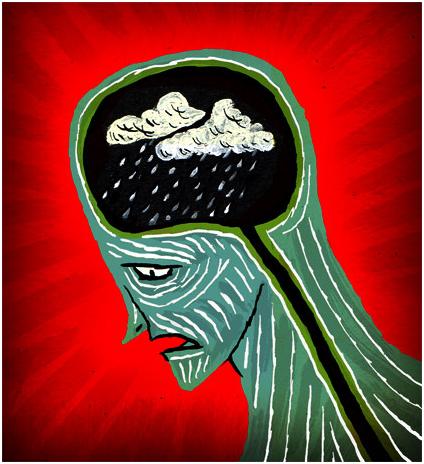
Type 2 Diabetes – are you sure it is not Type 2 Diabetes Symptoms?
Read this Article to know all about the Type 2 Diabetes
In Type 2 diabetes the body does not create enough or sufficient insulin. Insulin is the hormone which is important for the body to be able to use sugar. in Type 2 Diabetes the body doesn’t react to the insulin normally.
Glucose is less able to enter the cells and do its work of providing energy. This causes the blood sugar level to go up, making the pancreas produce even more insulin. Finally, the pancreas can wear out from working overtime to produce extra insulin. Then, the pancreas may no longer be able to create enough insulin to keep a person’s blood sugar levels within a normal range.
Children and teens with type 2 diabetes use diet, exercise, and medicines that recover the body’s response to insulin to manage their blood sugar levels.
Causes of Type 2 Diabetes
Although no one knows exact causes Type 2 diabetes, there appears to be a hereditary component to developing it. in fact, it’s expected that 45% to 80% of children with type 2 diabetes have at least one parent with diabetes and may have a significant family history of this ailment.
Most children and adults who develop type 2 diabetes are overweight or obese. Excess fat makes it difficult for the cells to react to insulin. And being inactive (lack of physical movement) further decreases the body’s capability to act in response to insulin.
Many years ago, doctors called this type of diabetes adult-onset diabetes because it almost exclusively affected the adults who are overweight. Today, that explanation is no longer correct. Today more kids and teens are being diagnosed with Type 2 diabetes, possibly because more kids and teens are overweight.
Type 2 Diabetes Symptoms:
The following symptoms are the most common symptoms of type 2 diabetes. but the symptoms may differ from one person to another. Symptoms may include:
* frequent infections that are not simply healed
* high levels of sugar in the blood and urine when tested
* intense hunger but loss of weight
* irritability and mood changes
* tingling or loss of feeling in the hands or feet
Some people who have type 2 diabetes show no symptoms. Type 2 diabetes Symptoms may be mild and almost invisible, or easy to confuse with signs of aging.
The symptoms of type 2 diabetes may look like other conditions or medical problems. Always discuss with your physician or doctor for a diagnosis.
Treatment for type 2 diabetes:
Precise treatment for type 2 diabetes will be determined by your physician or doctor based on:
* your age, overall health, and medical records
* level of the disease
* your tolerance for specific medications, procedures, or therapies
* your attitude or preference
The goal of treatment is to keep normal blood sugar levels.
Importance is on control of blood sugar (glucose) by observing the levels, habitual physical activity, meal planning, and regular healthcare. Treatment of diabetes is an enduring process of management and education that comprises not only the person with diabetes, but also healthcare experts and family members.
Often, Type 2 diabetes can be controlled through losing weight, improved nutrition, and exercise only. Though, in some cases, these procedures are not sufficient and either oral medications and/or insulin must be used. Treatment often consists of:
* a suitable exercise program
* regular foot examination
* Oral medications and/or insulin replacement therapy, as directed by your physician
There are a variety of types of medications that may be used to cure type 2 diabetes when the way of life changes such as diet, exercise, and weight loss. Oral medications of numerous dissimilar types exist, with each type working in a different mode to lower blood sugar. One medication may be united with another medication to improve blood sugar control. when oral medications are no longer useful, insulin may be needed.
New medications for treating diabetes are in progress. GLP-1 agonists are one of the latest kinds of medications. GLP-1 agonists work by stimulating insulin production by the pancreas, slowing the emptying of food from the stomach, and reducing the production of glucagon in the pancreas (glucagon is a hormone developed by the pancreas that stimulate release of glucose by the liver).
Regular monitoring of the hemoglobin A1c levels
The hemoglobin A1c test (also called HbA1c test) shows the average amount of sugar in the blood over the previous three months. The outcome or result will indicate if the blood sugar level is under control. The frequency of HbA1c testing will be determined by your doctor. It is recommended that testing occur at least twice a year if the blood sugar level is in the objective range and stable, and more commonly if the blood sugar level is unsteady.
Untreated or inappropriately-treated diabetes can cause troubles with the kidneys, legs, feet, eyes, heart, nerves, and blood flow, which could lead to kidney failure, gangrene, amputation, blindness, or stroke. Thus, it is important to pursue a strict treatment plan.
The question is who is at risk of type 2 diabetes?
Type 2 Diabetes or insulin resistance often goes side by side with central obesity (excess body fat that is concentrated around the waist), high blood pressure and high cholesterol. This group of disorders is occasionally known as syndrome X or metabolic syndrome.
Factors that amplify the person’s risk of developing type 2 diabetes consist of:
* Person elder than 55;
* Person overweight or fat;
* Having an family member with diabetes (may be parent, brother or sister);
* having had gestational diabetes during pregnancy;
* Having had a borderline blood glucose outcome; and having had a heart attack, or having heart ailment or high blood pressure.